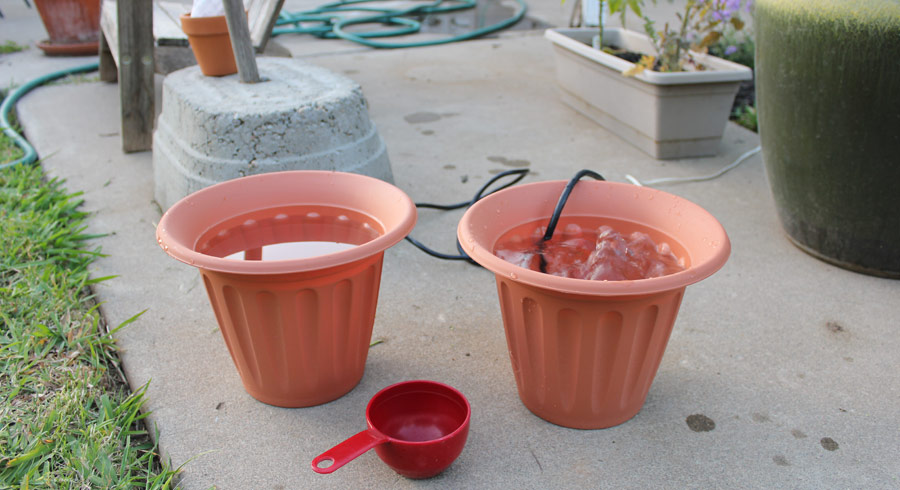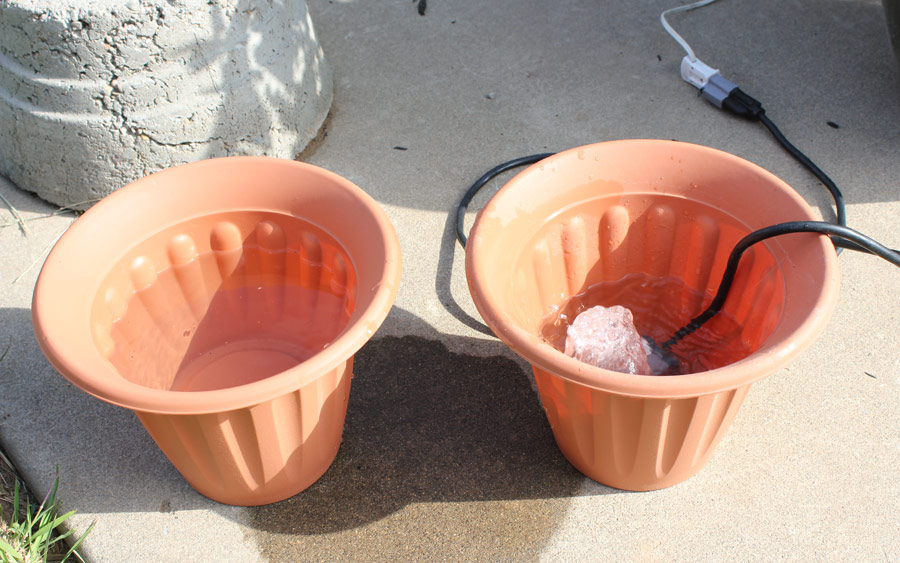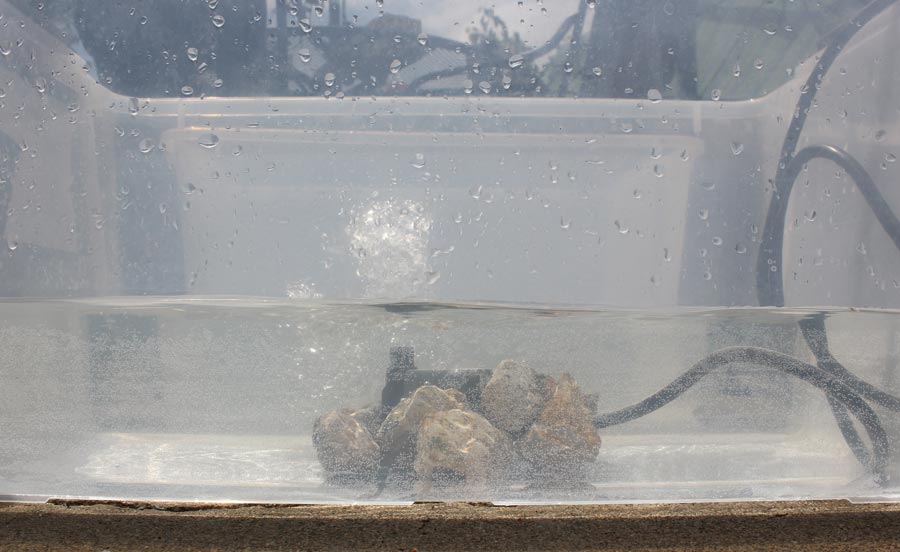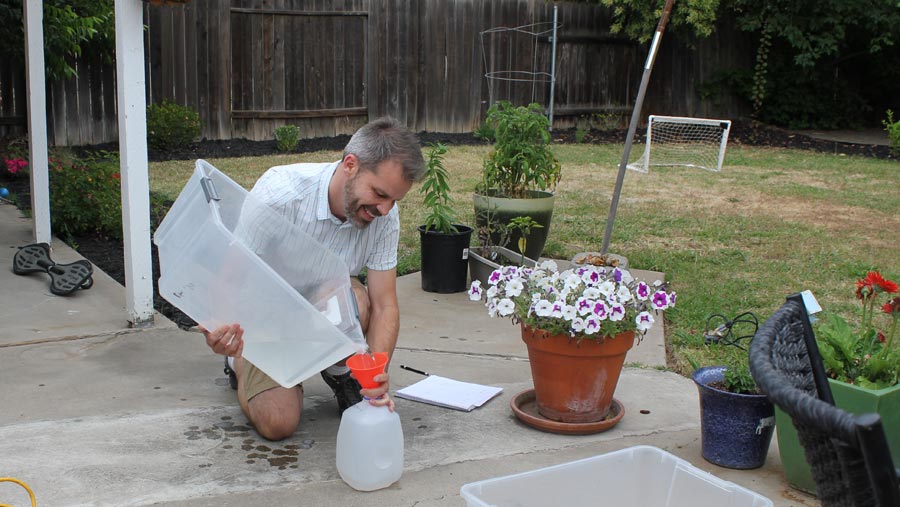How Much Water does a Fountain Use?
Does a recirculating water fountain use more water than a still pool?
By Rob Cockerham |
With California's drought entering its third summer, lawns are being torn up and pools are going dry. Some water-saving steps are counter-intuitive, and some seem to be for looks only.
When I saw a sign at Lowe's explaining that their fountains had to be shut down I wondered, how much water does a fountain use?

My hypothesis was that a recirculating fountain uses only a bit more water than a regular pool of water. It was easy to test.
I filled two identical pots with an identical quantity of water (112 ounces) and submerged a small water pump in one of them. The pump wasn't powerful enough to blast a column of water into the air, but the water was immediately roiling and churning.
Dots of spilled droplets appeared on the warm concrete under the fountain. Was this the big difference between the two vessels? One had water which would leave the fountain?

Two days later, the fountain was losing. As the water level dropped, the fountain spray made a bigger splash, increasing the chance that drops would fly free from the recirculation loop.

A day later, the water in the still pot had visibly dropped, and the fountain water was only half full. The water spray was now leaping around and there was a sizable wet spot on the concrete.

By the fourth day, the pump was making ugly sounds, resting in just a bit of remaining water. It was down to one cup of water.
At the end of the experiment, the still water had only lost 25 ounces, while the fountain had lost 104 ounces.

But I wasn't satisfied with this conclusion. Most of the water had been lost to splashing. What if the fountain was big enough to catch every drop? Would the fountain still lose water so quickly?

I devised another experiment. This time I used two clear storage bins with three gallons of water. With 10-inch walls, the fountain couldn't spray out of this bin. The only way out was evaporation.
There were a few factors at play.
- The splashing water has more surface area, more contact with the hot surrounding air.
- The still water has a top layer which is less able to cool off than the mixing waters of the fountain bin.
- The pump motor heats the water a bit.
- Both bins are absorbing heat from the concrete below.

I added 10 rocks to each bin, to help the pump from scooting around the slick plastic bottom.

It took a few days, but the fountain water was dropping noticably faster than the still water.

Measuring the remaining water.

The fountain used more water. In 100 hours, the fountain lost 1 and 2/3rds gallons of water to evaporation. The still water lost almost a gallon.

The evaporation loss was pretty damn slow, about one ounce per hour for the still water, two ounces per hour for the fountain.
The price of that much water is still less than a penny per day, but I understand the psychological value of shutting down water use which seems frivolous. A fountain of spraying water looks like waste, and there is really no harm in shutting it down until things get better.



